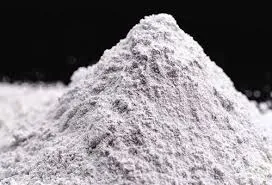
Lug . 30, 2024 06:27 Back to list
Exploring the Structure and Applications of Hydroxyethyl Cellulose in Various Industries and Products
Understanding Hydroxyethyl Cellulose Composition, Properties, and Applications
Hydroxyethyl cellulose (HEC) is a non-ionic, water-soluble polymer widely used in various industries due to its unique properties. It is derived from cellulose, one of the most abundant organic polymers found in nature, primarily sourced from wood pulp and cotton. The formation of hydroxyethyl cellulose involves the substitution of hydroxyethyl groups onto the hydroxyl groups of cellulose, enhancing its functionality and applicability in numerous products.
Chemical Structure and Formula
The chemical formula of hydroxyethyl cellulose can be represented as (C₂H₆O₂)n, where n refers to the degree of polymerization that varies depending on the source and processing method. The hydroxyl groups in cellulose are replaced with hydroxyethyl groups, making HEC soluble in water and providing it with certain rheological properties. The degree of substitution (DS) is a key parameter, influencing viscosity, solubility, and performance in applications.
Properties of Hydroxyethyl Cellulose
HEC offers several advantageous properties that make it a versatile additive in numerous products
1. Thickening Agent One of the primary uses of HEC is as a thickening agent in various formulations, including paints, coatings, and cosmetics. Its ability to increase viscosity without significantly altering the texture is highly valued.
2. Water Retention HEC has excellent water-retention capabilities, making it ideal for use in personal care products, such as moisturizers and hair conditioners, where prolonged hydration is desired.
3. Stabilizer In emulsion formulations, HEC acts as a stabilizer, preventing the separation of oil and water phases, which is crucial in products like lotions and creams.
4. Film-Forming Properties HEC can form flexible and transparent films, making it suitable for use in coatings and adhesives, providing both protection and aesthetic appeal.
hydroxyethyl cellulose formula

Applications of Hydroxyethyl Cellulose
The unique properties of hydroxyethyl cellulose have led to its wide-ranging applications across various sectors
1. Cosmetics and Personal Care HEC is commonly found in shampoos, conditioners, lotions, and gels, where it enhances texture, stability, and moisture retention.
2. Construction Industry In construction, HEC is used in mortars, plasters, and self-leveling compounds as a thickener and a water-retention agent, improving workability and adhesion.
3. Food Industry HEC acts as a thickener and emulsifier in some food products, providing texture and stability to sauces, dressings, and dairy products.
4. Pharmaceuticals In drug formulations, HEC is used as a binder, coating agent, and thickener, optimizing drug delivery and enhancing stability.
5. Textile Industry HEC is employed in textile printing and finishing processes to improve the formulation's viscosity and ensure uniform application.
Conclusion
Hydroxyethyl cellulose is a versatile polymer that exemplifies the potential of cellulose derivatives in modern applications. Its unique combination of properties—such as thickening, water retention, and biocompatibility—has established it as an essential ingredient in various industries, including cosmetics, construction, food, pharmaceuticals, and textiles. As research continues to evolve, the potential applications of HEC are likely to expand, further demonstrating its importance in material science and product formulation. By understanding its composition and properties, manufacturers can harness HEC's capabilities to create innovative solutions that meet the demands of today's consumers.
-
Versatile Hpmc Uses in Different Industries
NewsJun.19,2025
-
Redispersible Powder's Role in Enhancing Durability of Construction Products
NewsJun.19,2025
-
Hydroxyethyl Cellulose Applications Driving Green Industrial Processes
NewsJun.19,2025
-
Exploring Different Redispersible Polymer Powder
NewsJun.19,2025
-
Choosing the Right Mortar Bonding Agent
NewsJun.19,2025
-
Applications and Significance of China Hpmc in Modern Industries
NewsJun.19,2025







